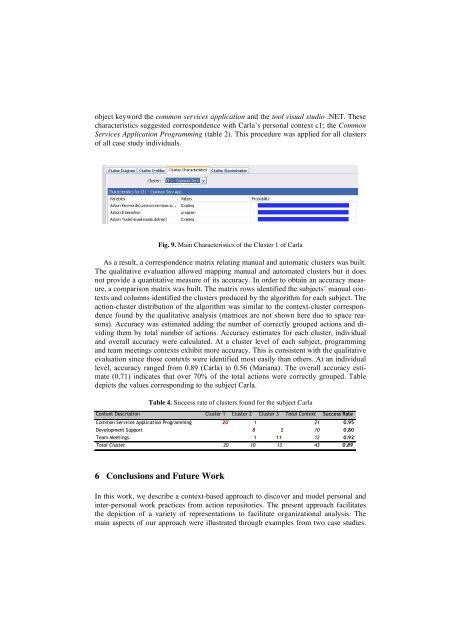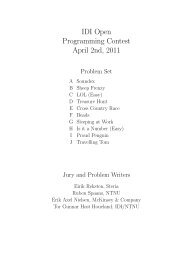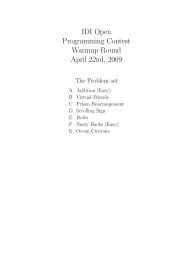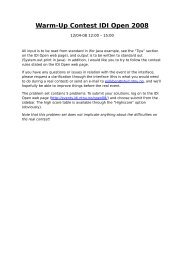Reverse-engineering of individual and inter-personal work practices
Reverse-engineering of individual and inter-personal work practices
Reverse-engineering of individual and inter-personal work practices
- No tags were found...
Create successful ePaper yourself
Turn your PDF publications into a flip-book with our unique Google optimized e-Paper software.
object keyword the common services application <strong>and</strong> the tool visual studio .NET. Thesecharacteristics suggested correspondence with Carla’s <strong>personal</strong> context c1; the CommonServices Application Programming (table 2). This procedure was applied for all clusters<strong>of</strong> all case study <strong>individual</strong>s.Fig. 9. Main Characteristics <strong>of</strong> the Cluster 1 <strong>of</strong> CarlaAs a result, a correspondence matrix relating manual <strong>and</strong> automatic clusters was built.The qualitative evaluation allowed mapping manual <strong>and</strong> automated clusters but it doesnot provide a quantitative measure <strong>of</strong> its accuracy. In order to obtain an accuracy measure,a comparison matrix was built. The matrix rows identified the subjects’ manual contexts<strong>and</strong> columns identified the clusters produced by the algorithm for each subject. Theaction-cluster distribution <strong>of</strong> the algorithm was similar to the context-cluster correspondencefound by the qualitative analysis (matrices are not shown here due to space reasons).Accuracy was estimated adding the number <strong>of</strong> correctly grouped actions <strong>and</strong> dividingthem by total number <strong>of</strong> actions. Accuracy estimates for each cluster, <strong>individual</strong><strong>and</strong> overall accuracy were calculated. At a cluster level <strong>of</strong> each subject, programming<strong>and</strong> team meetings contexts exhibit more accuracy. This is consistent with the qualitativeevaluation since those contexts were identified most easily than others. At an <strong>individual</strong>level, accuracy ranged from 0.89 (Carla) to 0.56 (Mariana). The overall accuracy estimate(0.71) indicates that over 70% <strong>of</strong> the total actions were correctly grouped. Tabledepicts the values corresponding to the subject Carla.Table 4. Success rate <strong>of</strong> clusters found for the subject CarlaContext Description Cluster 1 Cluster 2 Cluster 3 Total Context Success RateCommon Services Application Programming 20 1 21 0.95Development Support 8 2 10 0.80Team Meetings 1 11 12 0.92Total Cluster 20 10 13 43 0.896 Conclusions <strong>and</strong> Future WorkIn this <strong>work</strong>, we describe a context-based approach to discover <strong>and</strong> model <strong>personal</strong> <strong>and</strong><strong>inter</strong>-<strong>personal</strong> <strong>work</strong> <strong>practices</strong> from action repositories. The present approach facilitatesthe depiction <strong>of</strong> a variety <strong>of</strong> representations to facilitate organizational analysis. Themain aspects <strong>of</strong> our approach were illustrated through examples from two case studies.







